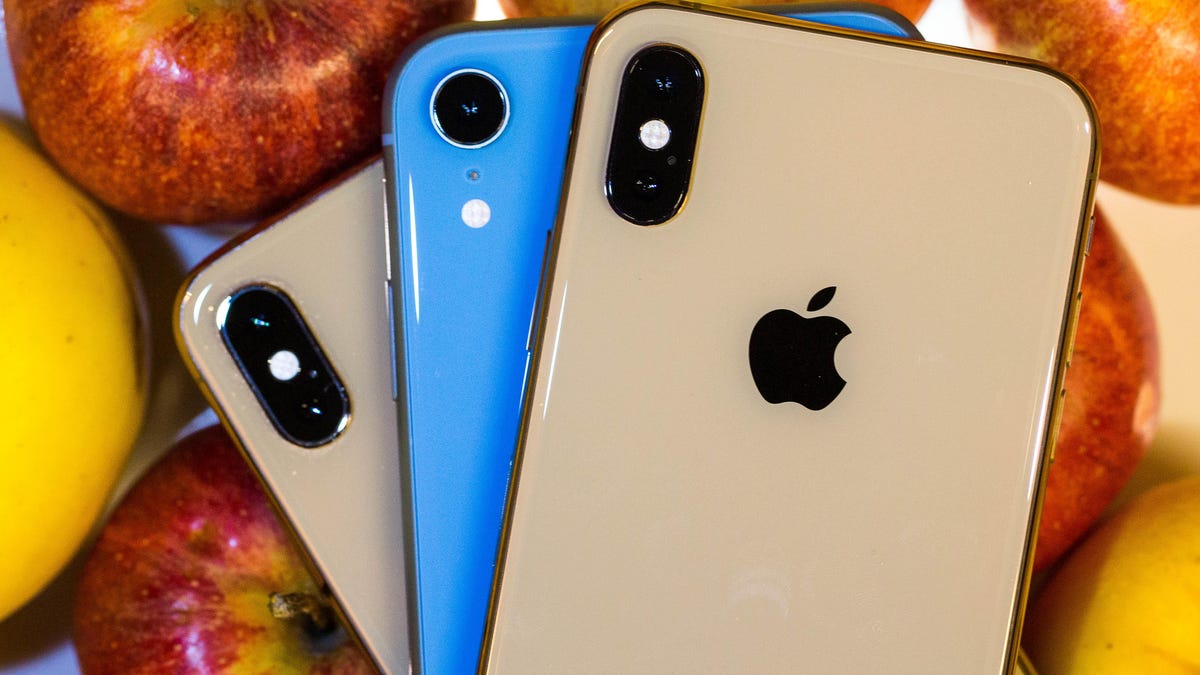iPhone XR and XS review: Seven months in, what's good and what's bad
Revisiting Apple's 2018 iPhones in a 2019 world.

Since the launch of the iPhone XS, XS Max and XR last year, the phone landscape has changed a bit. It's recently been crowded with much sexier stories: 5G is beginning to rear its head, wild new transforming folding phones are capturing people's imaginations -- even with problems rearing their heads-- and there are phones studded with more cameras than you can keep track of.
The iPhones from late 2018 are not so interesting in comparison. But that's also to their credit. After all, when Verizon launched its 5G network it turned out to be spottier than expected, Samsung's Galaxy Fold phone is already breaking, and some of those camera-studded phones don't do quite as much as you think.
The iPhones, meanwhile, feel pretty flawless, which is quite un-newsworthy. They're clearly Apple's most polished and perfected products right now.
But that doesn't mean they couldn't use improvements. The phone industry is accelerating so fast that Apple's phones are inevitably going to change with it. But where they are now is a very solid, stable place -- if not an exciting one.
Did you buy the right iPhone?
Good news: Whatever iPhone you picked last year, if you picked one that is, you're just fine. (You're also fine if you have the iPhone X or iPhone 8 or iPhone 7, too!) Each model has its advantages and drawbacks. My favorite is still the iPhone XR. It has the best price-to-value pick, its battery life is great and its smaller size is ideal for me. And the iPhone XR's LCD display, while technically not as good as the iPhone XS' OLED display, isn't perceptibly different in everyday use.
But I appreciate the added antennas, durability and, in particular, the dual rear camera of the iPhone XS models. I use the 2x zoom for on-location shoots and closeup shots of my kids all the time. A dual camera iPhone XR this year seems like an inevitability, especially if the new premium iPhones get three rear cameras. The XS and XS Max still feel too expensive (not as expensive as a folding phone, though).
Only two rear cameras?
Camera: Good, but could definitely be better
The iPhone XS and XR do a great job in everyday use, and both their rear cameras and selfie cameras are really good. Video capture is particularly excellent too. But there are other phones that can do things the iPhone can't.
The newest Samsung Galaxy S10, for example, has three rear cameras, offering an ultra wide-angle lens that the iPhones don't have. It's a common trend, and the more lenses you have, the more framing options you have.
Although some phones edge out the iPhones in photo quality based on CNET tests, it's really one specific feature from one specific phone I envy the most -- Night Sight on the Pixel 3. After trying Google's low-light mode on the Pixel 3, I immediately loved what it did for my photos. The iPhone can handle well without flash most of the time, but Night Sight is on a different level. It's the sort of feature that either iOS 13 or the next iPhone should have.
Face ID stands alone
There are other phones that have face unlocking, and others have in-display fingerprint scanners, like the Galaxy S10 and OnePlus 6T. But Face ID remains the smoothest and best implementation of facial biometrics I've seen. Even though I'm still not wild about how many times I seem to still need to enter my passcode because my face is at the wrong angle, Face ID in general works well and works invisibly. It's even more useful when it reads my face to pull up my app passwords and help with logins, which is something I've become hooked on.
Face ID isn't very different in concept than it was when the iPhone X launched in 2017. Now, it feels everyday normal.
Let's talk AirPower (and charging)
The AirPower wireless charging mat was a looming promise since 2017, and it suggested that charging for the iPhone and its accessories would be vastly improved. Now that Apple canceled AirPower though, what's the alternative?
The iPhone still uses Lightning to charge, and a too-slow 5-watt charger bundled with the phone. The iPhone should have fast charging right out of the box, but in the meantime you could buy larger chargers and adapters for USB-C chargers at an extra cost, which help compensate if you're not satisfied with the battery life.
And while wireless Qi charging is nice to have, iPhones still charge as fast with wireless Qi as other phones do. Moving to USB-C and faster Qi charging need to happen in 2019.
In addition, it'd be cool if the iPhone could wirelessly charge other accessories too. This would be cribbed directly from Samsung, whose Galaxy S10 phones can cleverly charge Galaxy Buds and the Galaxy Watch right through their back. The Apple Watch could use that type of convenience when traveling and you wouldn't have to bring an extra charger.
The iPhone is a stable buoy in a changing world
The iPhone is still a really great phone, but it continues to feel familiar in a world of increasingly changing tech. It's almost, dare I say, the comfort choice? It's the device that connects to all my things, and it powers the connections to most of the tech I test and wear. It's a cornerstone device and it does a good job at being exactly that. It's the product Apple makes that feels the most recommendable. And yet, as the shape of phones (figuratively and literally) begins to transform to farther-off possibilities, the iPhone remains the familiar, stable -- almost boring -- device, not the more exciting and unpredictable new one.

